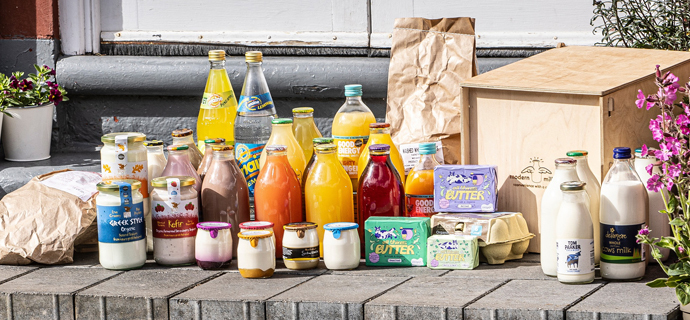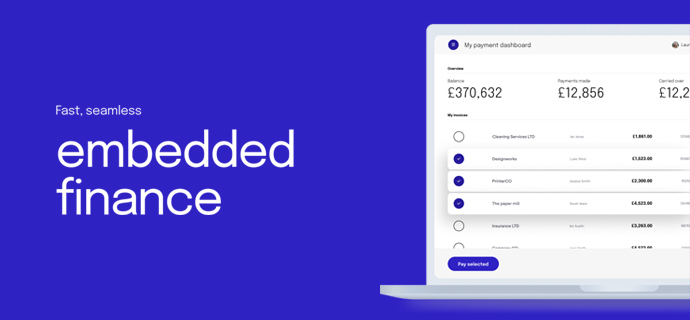How have the last four years affected startup performance? SyndicateRoom CEO Graham Schwikkard looks at the numbers.
The year 2020 was a year like no other. The COVID-19 pandemic changed everything, causing huge and immediate changes to our lives and economies. Startups and venture capital were not spared from this turmoil.
We obviously did not predict the pandemic and started our first investments for Access EIS in January 2020. All these investments faced a world of uncertainty and rapid changes in how people lived and worked. So I wanted to look into how this 2020 cohort of startups performed as investments, highlighting their successes and how we did at capturing their growth.
I have written previously looking at the long term performance of startup cohorts in the UK – you can read my article from last year where I indexed the 2011-2015 UK cohorts. This analysis does form one of the principles of the Access Fund – that the startup market grows at a consistent rate and you can capture that growth with a diversified portfolio.
However, we also know that period of time was during the Zero interest-rate policy (ZIRP) which may have created a bull market. So we need to consider how it may have changed in more recent times of higher interest rates, pandemic recovery, and war in Europe.
Our methodology is straightforward. We take the sum total of the valuations of startups that raised an investable round (for us this is a minimum of £100k raised, a minimum valuation of £1m and a maximum valuation of £50m), and track how their valuations change year on year based on new investments into the companies at new valuations. We then index that to a theoretical £10k investment in the index.
I want to stress here that this is theoretical as you cannot invest £10k in this index since these are all private transactions and it covers over 1,400 deals. Moreover, it assumes no transaction costs or fees which would usually be present if you found a service provider to somehow create it. Finally, it's important to note that some companies in the index will be undervalued and some will be overvalued purely based on the fact that they haven't raised a new funding round, or because they are distressed but haven't had a downround or gone into administration. But generally having looked at older cohorts, these do tend to cancel eachother out and if anything it's the companies that end up being £1bn+ valuations later on that are the real ones to look at for in terms of skewing the index either way.
We have taken the data to 2023 and although we have filings for companies in 2024, there is usually a delay and so I prefer to wait a few months after the end of the previous year to ensure reports at Companies House have been filed.
The results
We found that the 2020 cohort grew at a 15.4% annual growth rate to end up on a 1.54X multiple on original investment amount - also known as Total value to paid-in (TVPI). This is a decent growth rate when compared to other asset classes, but it is lower than what we measured on the 2011-2015 cohorts where the lowest rate was 25%.
I believe this comes down to two factors. The first is obviously the change in the investing environment we alluded to earlier. We previously measured those cohorts to 2022, just before interest rates increased and the venture capital market in the UK hit its highest ever total invested amount of £20bn. Late stage deals secured millions of pounds in investment at very high valuations. 2023 saw a ~42% drop in the total invested capital and this impacted the valuations of startups and therefore the index. We will need to go back and update the index to the same period but there is another important factor to consider.
The second driver will be the age of the cohort. As we are looking at the whole 2020 cohort, many will be just over 3 years of age and this is still quite early for the investments to have performed. There are some that have grown extremely quickly (I'll highlight them later), but many will only show big changes in valuation later. This is the typical J curve that ventura capitalists are familiar with. As we have shown in the power law analysis, the returns of the market are very concentrated and it is the big outliers that will form the majority of growth.
Some of the winners so far
Looking purely at growth, and not exits, these are the top performers for angel stage investing.
I've removed ones that are at the upper end of our £1m-£50m valuation bracket if only because those tend to be Series A investments where larger funds play. I'm more interested in these earlier deals so we can optimise our own algorithms to see how we could access these types of deals in the future.
These example also exclude any dilution, which has been factored into the index. Dilution occurs when the company raises another follow on funding round and it issued new shares which dilute your shareholding. Shareholders do have the option to invest again, but it will be at a higher share price and have a different return profile to the original investment.
Therefore when tracking cohorts you just want to know the performance of an investment made in that cohort, and not in subsequent cohorts where a follow on round would fall, and so you have to calculate the dilution factor in tracking it's performance.

Omnipresent
Omnipresent is an HR solution for managing global teams. £2.5m valuation to £309m valuation for a 126X multiple.

Oxilio
Oxilio researches and repurposing existing drugs for cancer treatment. £3.6m valuation to £243m valuation for a 69X multiple.

The Modern Milkman
Grocery delivery without unnecessary wasteful packaging. £5m valuation to £227m valuation for a 45X multiple.

Weavr
Weavr enables businesses to easily embed financial services. £6.7m valuation to £94m for a 20X.

Nivoda
Online gemstone and diamond marketplace. £4.4m valuation to £79m valuation for a 17X multiple.
The Access 2020 Cohort
We are in a unique position as a venture capital firm. I'm not aware of any other firms which report their performance against the market and this is because most firms do not track the market. Most funds will attempt to find and choose the 8-10 companies from the 1400+ private market deals that will be in the top 10% of returns. It is more of a hit it big or miss completely approach. However, our approach is different as our original thesis when we launched the fund was to create more consistent returns through a diversified portfolio and by investing alongside angel investors who have a track record of investing in the top 10% of deals.
Using the same data set and marking out our companies, the Access cohort grew at 14.8% per year for a 1.51 TVPI. This is unfortunately, below what the market reported (15.4% and 1.54) but at least not terribly far off. Nivoda is part of this cohort and made it into the top performing investments.
Where to from here?
So what can we take away from this? No one else invests like this and so this was a theoretical model when it launched and now we have data to work with. I think it does provide validation for our model, because we are close to the market and indeed this fund is performing better than any of our previous funds despite investing in a market with weaker growth. However we haven't got full validation because we didn't beat the market and we must consider ways to improve it going forward.
The concept we must always be mindful of is the power law and the extreme distribution of returns - if you miss the top deals you simply won't beat the market. And investing in every single deal that happens is simply not feasible because of the closed nature of startup investing. It's possible that we simply could never have invested in some of those top deals because they were very restricted on who they would accept as investors (maybe they took on no angels or only took very large cheques).
Now it isn't clear whether we have missed the top deals as it's still early in their maturity. You will see in our biannual that there are a number of growing and promising companies in the portfolio. However, what keeps me up at night is if we have built a good enough deal sourcing machine to ensure we are seeing the top % of deals in the market (considering our parameters on valuation and round size). That's why we are performing this analysis - we will be reviewing the cap tables of the top deals and identifying new angels for us to approach and co-invest alongside. We're also working on partnering with angel groups and venture builders so we have greater access to deal flow.
Conclusion
Despite the unprecedented challenges of 2020, UK startups demonstrated resilience. The 2020 cohort, with a 15.4% annual growth rate and a 1.54X multiple on original investment, has shown decent growth, albeit lower than previous cohorts. Factors such as a changing investment environment and the age of the cohort contribute to these results. The top performers like Omnipresent and Oxilio showcase the potential within this group and the different sectors, highlighting the importance of identifying high-growth opportunities early on.
Our analysis validates our diversified investment model, though it also underscores the necessity of continually improving our deal sourcing strategies. As we move forward, our focus will remain on refining our approach to capture the most promising deals. This journey has just begun, and with lessons learned and strategies sharpened, we are optimistic about the future of startup investments and the potential they hold.
Please note: our office hours are weekdays, 9.30am - 5.30pm.